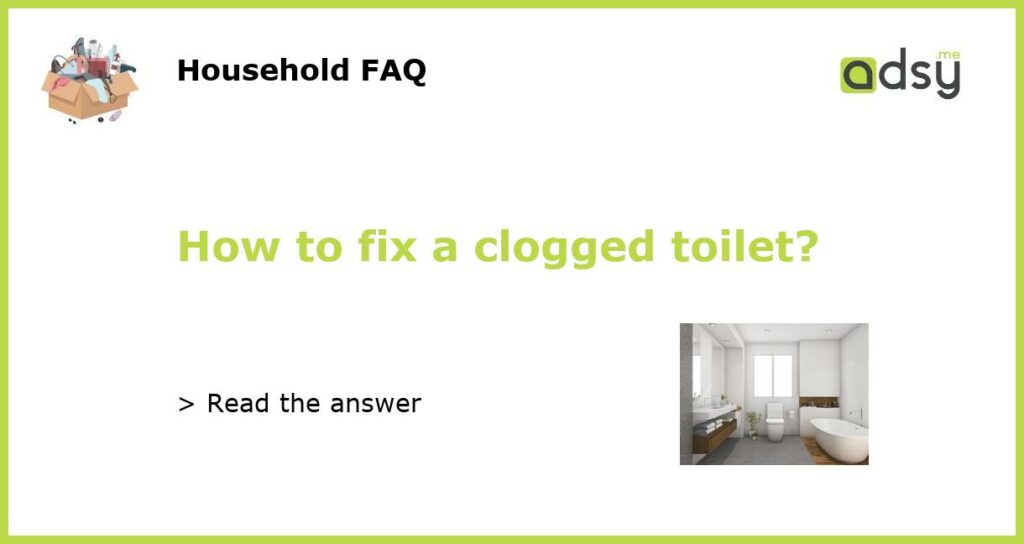Understanding the Problem: What Causes a Clogged Toilet
A clogged toilet can be a frustrating and unpleasant experience. Before you can fix the problem, it’s important to understand what causes a clogged toilet in the first place. There are several common causes, including:
- Too much toilet paper: Excessive use of toilet paper can easily clog the toilet drain.
- Foreign objects: Items like sanitary products, wipes, or toys accidentally flushed down the toilet can cause a blockage.
- Hard water deposits: Over time, mineral deposits inside the toilet drain can build up and restrict the flow of water.
- Tree roots: In some cases, tree roots can grow into the sewer line, causing blockages.
Tools You’ll Need to Fix a Clogged Toilet
Before you begin fixing a clogged toilet, gather the necessary tools:
- Plunger: A plunger is a must-have tool for unclogging a toilet. Make sure you have a good quality plunger with a flanged bottom.
- Auger or toilet snake: If a plunger doesn’t do the trick, a toilet auger or snake can be used to break up more stubborn clogs.
- Rubber gloves: To protect your hands and maintain hygiene, wear rubber gloves when working on a clogged toilet.
- Bucket: A bucket will come in handy for removing excess water if needed.
Step-by-Step Guide to Fixing a Clogged Toilet
Follow these steps to fix a clogged toilet:
- Assess the severity: Determine if the toilet is clogged or just draining slowly. A slow drain may indicate a partial blockage that can be resolved with a plunger.
- Use a plunger: Position the plunger over the drain hole, ensuring a tight seal. Push down and pull up vigorously to create suction and dislodge the clog. Repeat as necessary until the water drains properly.
- Try a toilet auger: If the plunger doesn’t work, try using a toilet auger or snake. Insert it into the toilet drain and rotate the handle clockwise to break up the clog.
- Prevent overflow: If the water level is rising dangerously close to the rim, turn off the water supply to the toilet. Locate the shut-off valve near the base of the toilet and turn it clockwise to stop the water flow.
- Call a professional: If your efforts fail or you suspect a more serious problem, it’s best to call a professional plumber to avoid further damage to your plumbing system.
Preventing Future Toilet Clogs
Prevention is key to avoiding future toilet clogs. Here are some tips to help you keep your toilet running smoothly:
- Be mindful of what you flush: Only flush toilet paper and waste down the toilet. Avoid flushing items like wipes, cotton balls, and feminine hygiene products.
- Limit toilet paper usage: Use an appropriate amount of toilet paper to prevent excessive buildup in the drain.
- Regular maintenance: Periodically clean and maintain your toilet to prevent mineral deposits and buildup.
- Trim tree roots: If your toilet clogs are caused by tree roots in the sewer line, consider trimming or removing the trees.
When to Call a Professional
While minor toilet clogs can often be resolved with basic tools and techniques, there are times when it’s best to call a professional plumber. If you experience any of the following situations, it’s time to seek professional help:
- Repeated or chronic clogs
- Clogs that affect multiple fixtures
- Unusual noises or odors coming from the toilet or drains
- Slow drainage in multiple fixtures
A professional plumber has the expertise and equipment to diagnose and fix complex toilet clogs, ensuring the long-term health of your plumbing system.

